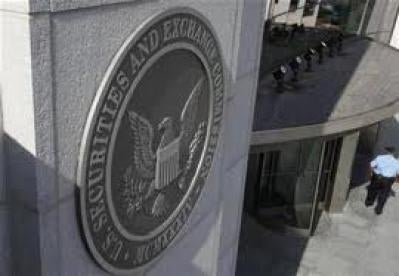As we head into a period of hotly contested elections this year that are likely to generate significant public participation, now is the time for investment advisers and other registrants to review, and if necessary strengthen, their pay-to-play compliance policies and procedures. As the regulatory, financial and reputational consequences of non-compliance are significant, advisers are well-served to review their compliance practices regarding the “pay to play” rules and remind appropriate adviser personnel of their obligations under these rules. See below for Vedder Price’s analysis of the “pay to play” rules, related enforcement actions and industry best practices.
The “Pay to Play” Rule
Since its adoption in 2010, the “pay-to-play” rule (the “Rule”, which is Rule 206(4)-5 under the Investment Advisers Act of 1940), has materially impacted the business development activities and compliance programs of investment advisers. As a general matter, the Rule prohibits investment advisers from receiving compensation for providing investment advisory services to government entity clients for a period of two years where the adviser or covered personnel of the adviser have made political campaign contributions to certain officials of the government entity. This limitation is intended to prevent advisers and their personnel from making political contributions to candidates for public office who are in a position to influence the award of advisory contracts for various government entities, including public pension funds. The Financial Industry Regulatory Authority, the Municipal Securities Rulemaking Board and the Commodity Futures Trading Commission each also have their own pay-to-play rules, which taken together similarly limit the conduct of broker-dealers, municipal advisers, swap dealers and their personnel, as applicable.1
Prohibited Conduct
The Rule prohibits advisers from (i) providing investment advisory services for compensation to a government entity within two years after it or one of its covered associates makes a contribution to certain officials of the government entity (referred to as the “two-year time out provision”); (ii) paying or agreeing to pay a third-party solicitor to solicit government entities for investment advisory services unless the solicitor is registered as a broker-dealer or investment adviser and subject to pay-to-play restrictions;2 and (iii) soliciting or coordinating certain contributions to officials, candidates or political parties where the adviser is providing or seeking to provide investment advisory services to government entities. Additionally, the Rule contains a “catch-all” provision that prohibits any act done indirectly, which, if done directly, would violate the Rule—including an adviser or its covered associates directing or funding contributions through third parties which would otherwise be in violation of the Rule. Advisers are also required to maintain certain books and records3 documenting their covered associates, government entity clients, political contributions and compensated solicitors of government entity clients.
Officials of a Government Entity
The questions that most commonly arise pertaining to the Rule surround the definitions of “official,” and “government entity.”4 The Rule defines an “official” as “any person (including any election committee for the person) who was, at the time of the contribution, an incumbent, candidate or successful candidate for elective office of a government entity, if the office: (i) is directly or indirectly responsible for, or can influence the outcome of, the hiring of an investment adviser by a government entity; or (ii) has authority to appoint any person who is directly or indirectly responsible for, or can influence the outcome of, the hiring of an investment adviser by a government entity.”5 This somewhat vague definition has left compliance officers and industry personnel to interpret what conduct and personnel the Rule intends to target. “Officials” includes both state and local office holders and candidates for state and local office. It is important to remember, however, that contributions to candidates for federal office may trigger application of the Rule if those candidates for federal office are also holders of state or local offices at the time of the contribution.
During the rulemaking and comment process, the SEC rejected numerous requests from industry participants to more clearly define the types of public office that constitute a “public official” for purposes of the Rule on the grounds that significant variances between how state and municipal statutes entrust management of public funds would make any attempt to identify specific officials who are in a position to influence the selection of an adviser both over-inclusive and under-inclusive depending on the circumstances.6 However, in its Adopting Release to the Rule, the SEC did indicate by way of example that a governor with authority to appoint some members of a state pension fund board of directors which in turn has authority to hire an investment adviser would be an “official” for purposes of the Rule as would any state legislators also serving on the board.
Further, it is important for advisers and their covered associates also to remember that contributions to an official without authority to retain an investment adviser may still trigger application of the Rule if the official has authority to appoint others, who, in turn, have authority to hire or influence the hiring of investment advisers for a government entity. Moreover, it is the scope of authority of the particular office of an official, not the influence actually exercised by the individual, that determines whether the individual has influence over the awarding of an investment advisory contract under the Rule.7
Contributions
The definition of a “contribution” for purposes of the Rule is similarly broad. It includes not just monetary contributions but also any gift, subscription, loan, or anything else of value made for the purpose of influencing any election, for federal, state, or local office as well as the payment of debts incurred in connection with any such election. The payment of transitional or inaugural expenses of a successful candidate for state or local office are also contributions under the Rule. Thus, investment advisers should make sure their pay-to-play compliance policies and procedures, including any contribution pre-clearance requirement, are broad enough to capture the expansive definition of a contribution under the Rule.
Exceptions
If an adviser or covered associate has made a political contribution that would trigger application of the Rule, there are very limited exceptions to the two-year time out provision for (i) aggregate contributions up to $350 per election to an elected official or candidate for whom the individual is entitled to vote, and $150 per election to an elected official or candidate for whom the individual is not entitled to vote; and (ii) advisers or covered associates that obtain the return of their contributions (of up to $350) within 60 days of discovery, and the adviser discovers the contribution within four months. The exception for returned contributions can only be used two or three times a year depending on the number of covered associates an adviser has and may never be used more than once for the same covered associate. The SEC Division of Enforcement has strictly enforced these exception limits by bringing enforcement actions against advisers who identified and obtained the return of contributions albeit outside the narrow parameters of these exceptions.8
Exemptive Relief
While obtaining the refund of a contribution outside the terms of an authorized exception may neither cure a violation nor afford protection from enforcement, it may strengthen a claim for exemptive relief. The Rule permits an adviser to file an application for exemptive relief from the two-year time out provision. When considering the application, the SEC considers a variety of factors, including whether the adviser (i) had policies and procedures in place to prevent violations of the Rule; (ii) had no prior or contemporaneous knowledge of the contribution; (iii) took all available steps to obtain return of the contribution; and (iv) took other remedial or preventative measures. The SEC also considers the public interest as well as the contributor’s employment status at the time of the contribution, the timing and amount of the contribution, the nature of the election, and the contributor’s motive in making the contribution.
Enforcement
The SEC Division of Enforcement has aggressively enforced the Rule and will likely continue to do so. In 2017, following a more than year-long investigative sweep, it brought enforcement actions against 10 investment advisers for violations of the Rule and has brought numerous cases since that time. Moreover, it is relatively easy for the SEC staff to detect at least some violations of the Rule during investigations because details of political contributions and the identity of pension fund advisers are typically matters of public record. In addition, the staff may also detect violations through the examination process.
Best Practices
The best time for advisers to address contributions that may trigger the two-year time out provision or otherwise violate the Rule is before the contributions are made. Advisers should consider reviewing their compliance policies and procedures now and, where necessary, strengthen them including, where appropriate, through a robust contribution pre-clearance process, training covered associates at least annually, issuing periodic reminders, requiring annual certifications of compliance, and reviewing available federal, state, and local campaign finance databases.
FOOTNOTES
1 See FINRA Rule 2030; MSRB Rule G-37; 17 C.F.R. § 23.451 (CFTC Rule 451).
2 Political Contributions by Certain Investment Advisers, Investment Advisers Act (“IAA”) Release No. 3043 (Sept. 13, 2010) (“Adopting Release”) at 71.
3 See 17 C.F.R. § 275.204-2(a)(18).
4 A “government entity” includes “all state and local governments, their agencies and instrumentalities, and all public pension plans and other collective government funds, including participant-directed plans such as 403(b), 457, and 529 plans.” See Adopting Release at 43; Rule 206(4)-5(f)(5).
5 See Rule 206(4)-5(f)(6).
6 See Adopting Release at 44.
7 Id.
8 See, e.g., IAA Release No. 4614 (Jan. 17, 2017)




 i
i


